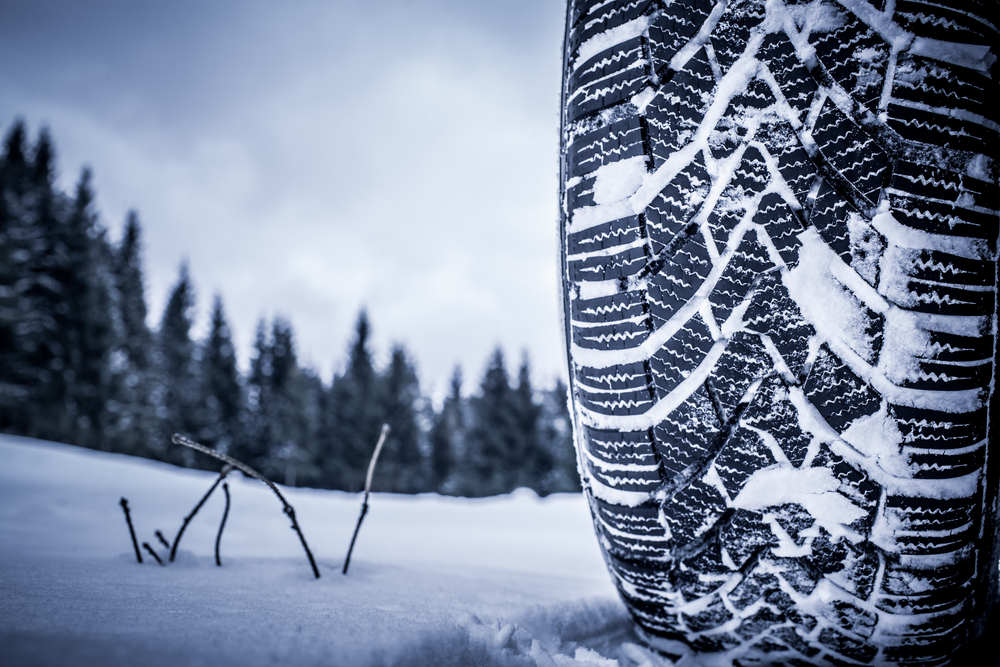If you’ve recently moved to Winnipeg – or anywhere else in Canada – and you haven’t yet experienced the driving conditions of a brutal Canadian winter, you may ask yourself if buying winter tires is worth the investment.
Well, let’s answer that question right off the bat. If you live in Canada, you should have winter tires. This is required by law in some provinces like Quebec – you can actually get fined for not using winter tires from December 5 through March 5.
However, even in more southern areas such as Toronto, the mean temperature during the winter is below or around 0 degrees celsius from December to March – so you’re going to be encountering a lot of snow and ice, and you’ll probably want winter tires to stay safe while driving.
So we’ve answered your first question – yes! You do need winter tires if you’re in Canada. Now, let’s take a look at some other common questions regarding winter tires, so that you can make an informed purchasing decision.
1. What’s The Difference Between All-Weather Tires And Winter Tires?
All-weather tires have been designed to perform well in almost all weather conditions – and they can work well in some snowy situations. However, they have not been manufactured specifically for snow. All weather tires are manufactured with a stiff rubber compound that stands up to heat well – this is important for summer driving, but reduces the ability for an all-weather tire to grip snow and ice.
Winter tires are made with softer rubber that will remain pliable in the cold, allowing for a better grip on snowy and icy surfaces. In addition, winter tires are made with more “lugs” and “voids”, and designed to have irregular, sharp edges. These design features allow winter tires to eject ice, slush, and snow from the tire’s grooves, providing better traction.
2. Are M + S Tires The Same As Winter Tires?
M + S stands for “mud and snow”, and is a common mark on all-weather tires. This marker simply indicates that a tire has been certified by the Rubber Manufacturer’s Association to provide relatively good traction in muddy areas and in light snow.
However, M + S tires are still all weather tires. They may have a slightly better tire design, but if you’re in Canada, there’s still no substitute for a true winter tire. M + S tires will not perform well in extremely snowy and icy conditions.
3. Should I Get Additional Siping Added To My Winter Tires?
Siping is the process of cutting small slits in rubber to increase its surface area, and provide more traction. Most winter tires are already aggressively siped, but if you live in a very slick area, or are extremely concerned about losing control of your car, you can get additional siping done for a fee.
4. Can I Just Buy Chains Instead?
Tire chains are another great way to provide your vehicle with extra traction in snowy and icy conditions – but they’re not a substitute for winter tires.
Snow chains can’t be used on bare pavement, so if you live somewhere where snow occasionally melts throughout the winter, you’ll have to spend a lot of time removing them and putting them back onto your tires.
Snow chains also can’t be used at highway speeds, limiting their utility compared to winter tires. So, while snow chains are a great investment if you live somewhere extremely cold like Winnipeg, they’re not a suitable alternative to a set of winter tires.
5. Do I Need Studded Winter Tires?
This depends on your environment. Winter tires without studs are more versatile, and tend to do very well in areas where snow melts occasionally, resulting in a lot of slush and relatively “warm” ice.
Studded tires, on the other hand, provide the best possible traction on hard-packed snowy and icy surfaces. These small pins are arrayed all throughout the tread of your tire, piercing the packed ice and snow to provide exceptional grip – like the claws on a snowshoe or climbing boot.
The drawback is that you’ll need larger, thicker winter tires to support studding, which can be expensive – and some provinces restrict the use of studded tires in Canada. If you live somewhere with relaxed regulations about studded tires, and if you’re in need of exceptional grip on icy surfaces, they’re well worth the investment.
Come To Ride Time – We Can Install Winter Tires In Winnipeg!
If you’re looking for a new set of winter tires in Winnipeg, Ride Time is where you want to be! We have a huge selection of winter tires – both studded and unstudded – and we can take care of your tire installation in our brand-new facility.
Our professional tire experts can help you select the perfect tires for your car, and offer you advice on siping and studded vs. studless tires. You can trust Ride Time to give you the information you need to stay safe and sound – all throughout the Winnipeg winter.



No Comments